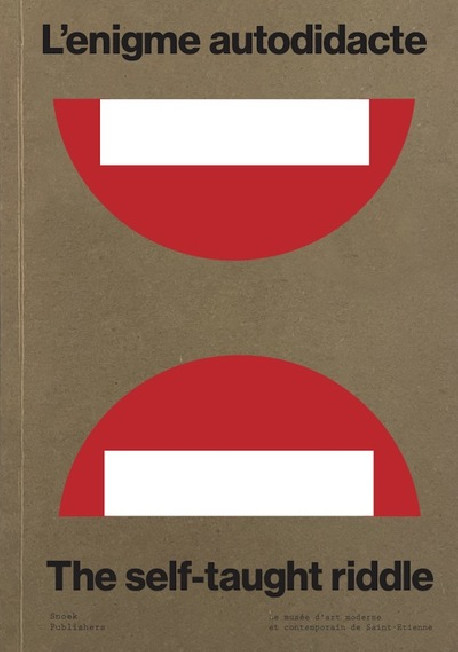No products
Product successfully added to your shopping cart
There are 0 items in your cart. There is 1 item in your cart.
Our webstore uses cookies to offer a better user experience and we consider that you are accepting their use if you keep browsing the website.

Exhibition catalogue
- New Art Books
- Exhibition catalogue
- Highlights
- Art Book Sale
- Museum's Shop & Gifts
- Bilingual art books and foreign editions
- Children's Books
- Art History
- Painting
- Architecture
- Sculpture
- Drawing & Engraving
- Photography
- Contemporary art
- Decorative Arts & Design
- Art Techniques
- Critics
- Entertainment art books
- Civilisations
- Partners Reviews
The Self-taught Enigma
The exhibition aims to revisit this idealising vision of the figure of the self-taught artist in the history of contemporary art in an attempt to grasp what actually happens when artists learn by themselves.
Product not available
| Model | 9789461616739 |
| Artist | Art contemporain |
| Author | Sous la direction de Charlotte Laubard |
| Publisher | Snoeck / MAMC+ |
| Format | Ouvrage broché |
| Number of pages | 340 |
| Language | Bilingue Français / English |
| Dimensions | 295x 210 |
| Published | 2021 |
| Museum | Musée d'art moderne et contemporain de Saint-Etienne / MAMC+ |
Exhibition Catalogue The Self-taught Enigma, presented at Musée d'art moderne et contemporain de Saint-Etienne (9 october 2021 - 3 april 2022).
Often celebrated as a kind of genius trained in the “school of life” who managed to produce a singular body of work despite a lack of professional training, the autodidact questions and challenges our conceptions of art. The exhibition aims to revisit this idealising vision of the figure of the self-taught artist in the history of contemporary art in an attempt to grasp what actually happens when artists learn by themselves.
What motivates the decision to create art? From what, from whom and how do we learn? What is the role of the context in which the person lives, their daily acts and experiences? Drawing on recent theoretical contributions from the educational sciences, the exhibition sheds new light on the role of autodidacticism, in French “autodidaxie”, that is to say “the action of learning without a master”, in an artistic journey. It focuses on the creative process and the sometimes heterodox methods and practices adopted by artists who learn by themselves.
The investigation is centred on the end of the 1950s, the moment that constitutes the advent of contemporary art. The rupture with tradition which artists sought to bring about led them to engage in practices of “unlearning” what had been transmitted during their training. Many self-taught artists entered then the art world by using gestures and motifs from everyday life or from other cultural fields in an innovative way. This movement was fuelled by a growing interest in works that seemed to be free of references to established traditions. The institutional recognition of these so-called “Brut” and “Outsider” creations culminated in their inclusion in documenta 5 in 1972 in Kassel and the donation of Jean Dubuffet’s Art Brut collection to the City of Lausanne in the same year.
In the late twentieth century, new self-taught artists entered the art world as it opened up to productions from non-Western cultural spheres, raising questions about the stance they took in relation to other artistic traditions. The exhibition concludes with the twenty-first century, when the multiplication of user-friendly digital tools and resources is causing new learning practices to emerge, notably with the arrival of artificial intelligence and autonomous algorithmic learning methods.
The exhibition assembles over 200 works by self-taught artists from a wide range of backgrounds who implement, emblematically, different modes of constructing knowledge autonomously. It also features the works of a few professional artists who decided to start from scratch and launch themselves into the unknown. It seeks to identify the intentions, processes and gestures that lead – consciously, intuitively or unconsciously – to aesthetic innovation and to obtain, sometimes retrospectively, to a prominent place in the history of art.
Recently viewed items












